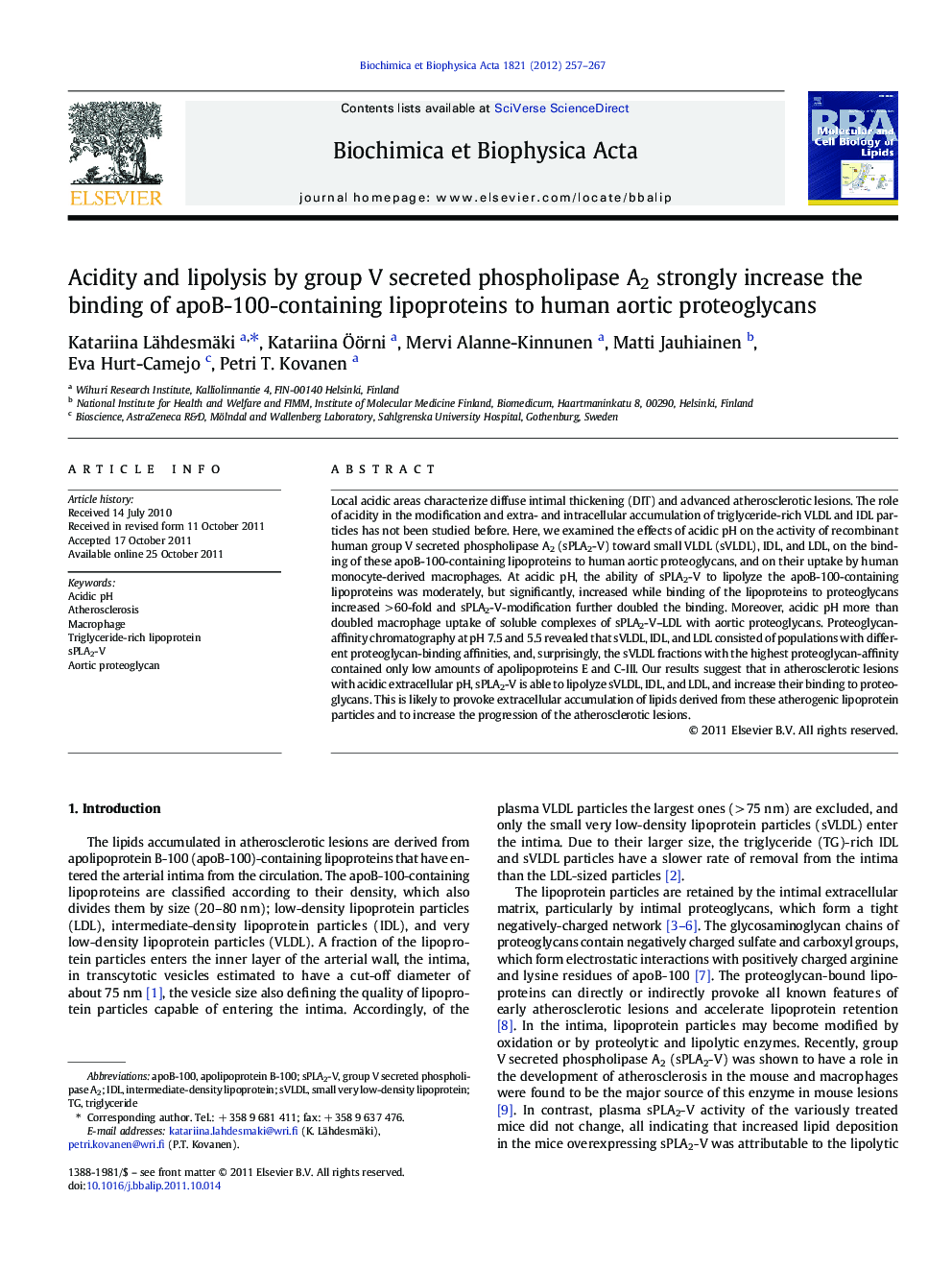| کد مقاله | کد نشریه | سال انتشار | مقاله انگلیسی | نسخه تمام متن |
|---|---|---|---|---|
| 1949446 | 1537757 | 2012 | 11 صفحه PDF | دانلود رایگان |

Local acidic areas characterize diffuse intimal thickening (DIT) and advanced atherosclerotic lesions. The role of acidity in the modification and extra- and intracellular accumulation of triglyceride-rich VLDL and IDL particles has not been studied before. Here, we examined the effects of acidic pH on the activity of recombinant human group V secreted phospholipase A2 (sPLA2-V) toward small VLDL (sVLDL), IDL, and LDL, on the binding of these apoB-100-containing lipoproteins to human aortic proteoglycans, and on their uptake by human monocyte-derived macrophages. At acidic pH, the ability of sPLA2-V to lipolyze the apoB-100-containing lipoproteins was moderately, but significantly, increased while binding of the lipoproteins to proteoglycans increased > 60-fold and sPLA2-V-modification further doubled the binding. Moreover, acidic pH more than doubled macrophage uptake of soluble complexes of sPLA2-V–LDL with aortic proteoglycans. Proteoglycan-affinity chromatography at pH 7.5 and 5.5 revealed that sVLDL, IDL, and LDL consisted of populations with different proteoglycan-binding affinities, and, surprisingly, the sVLDL fractions with the highest proteoglycan-affinity contained only low amounts of apolipoproteins E and C-III. Our results suggest that in atherosclerotic lesions with acidic extracellular pH, sPLA2-V is able to lipolyze sVLDL, IDL, and LDL, and increase their binding to proteoglycans. This is likely to provoke extracellular accumulation of lipids derived from these atherogenic lipoprotein particles and to increase the progression of the atherosclerotic lesions.
► Acidity increases lipolysis of apoB-100-containing lipoproteins by PLA2-V.
► Acidity and PLA2-V increase lipoprotein binding to human aortic proteoglycans (PGs).
► Acidity and PLA2-V increase macrophage uptake of LDL, IDL, sVLDL and LDL-PG complexes.
Journal: Biochimica et Biophysica Acta (BBA) - Molecular and Cell Biology of Lipids - Volume 1821, Issue 2, February 2012, Pages 257–267